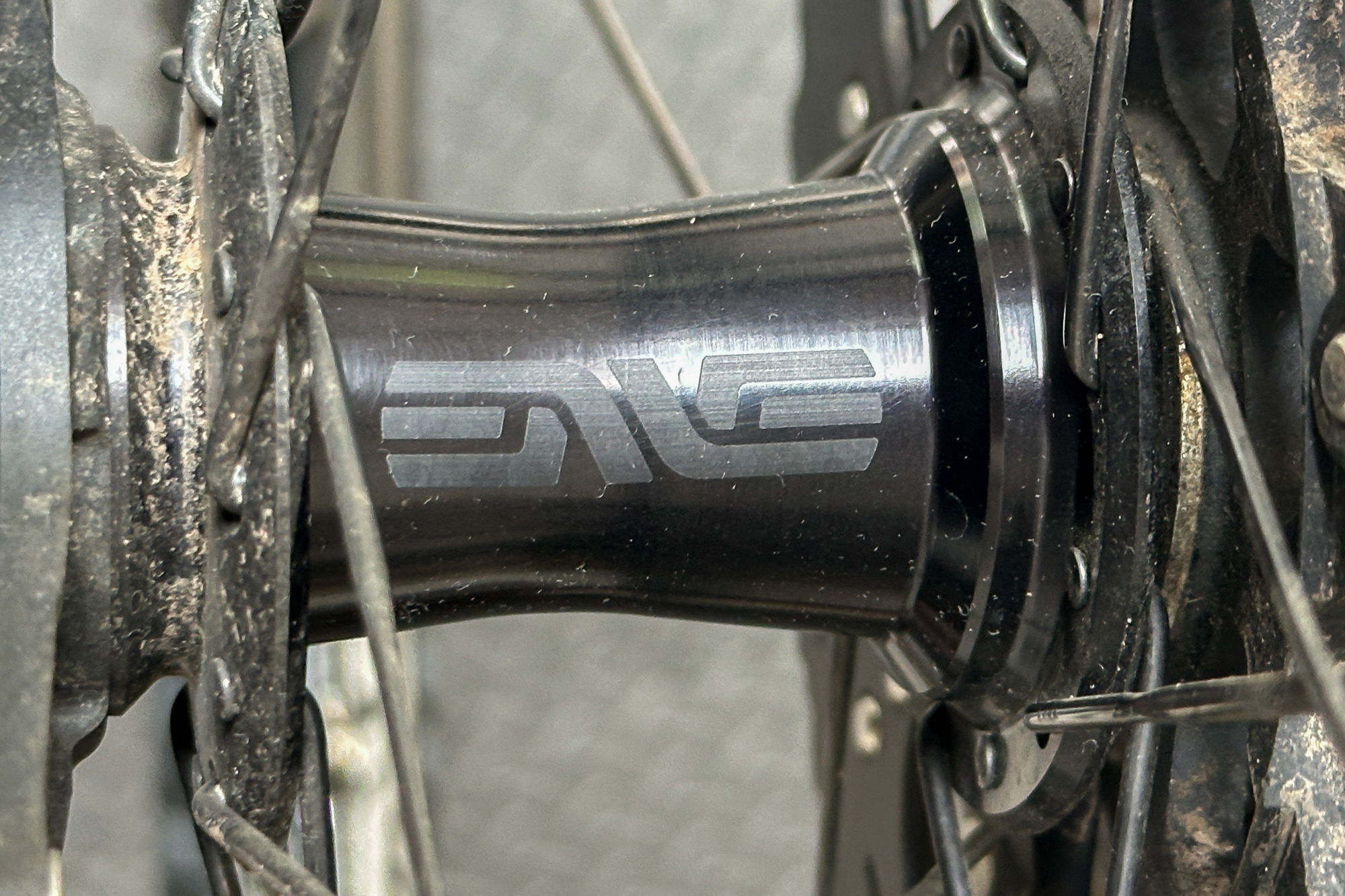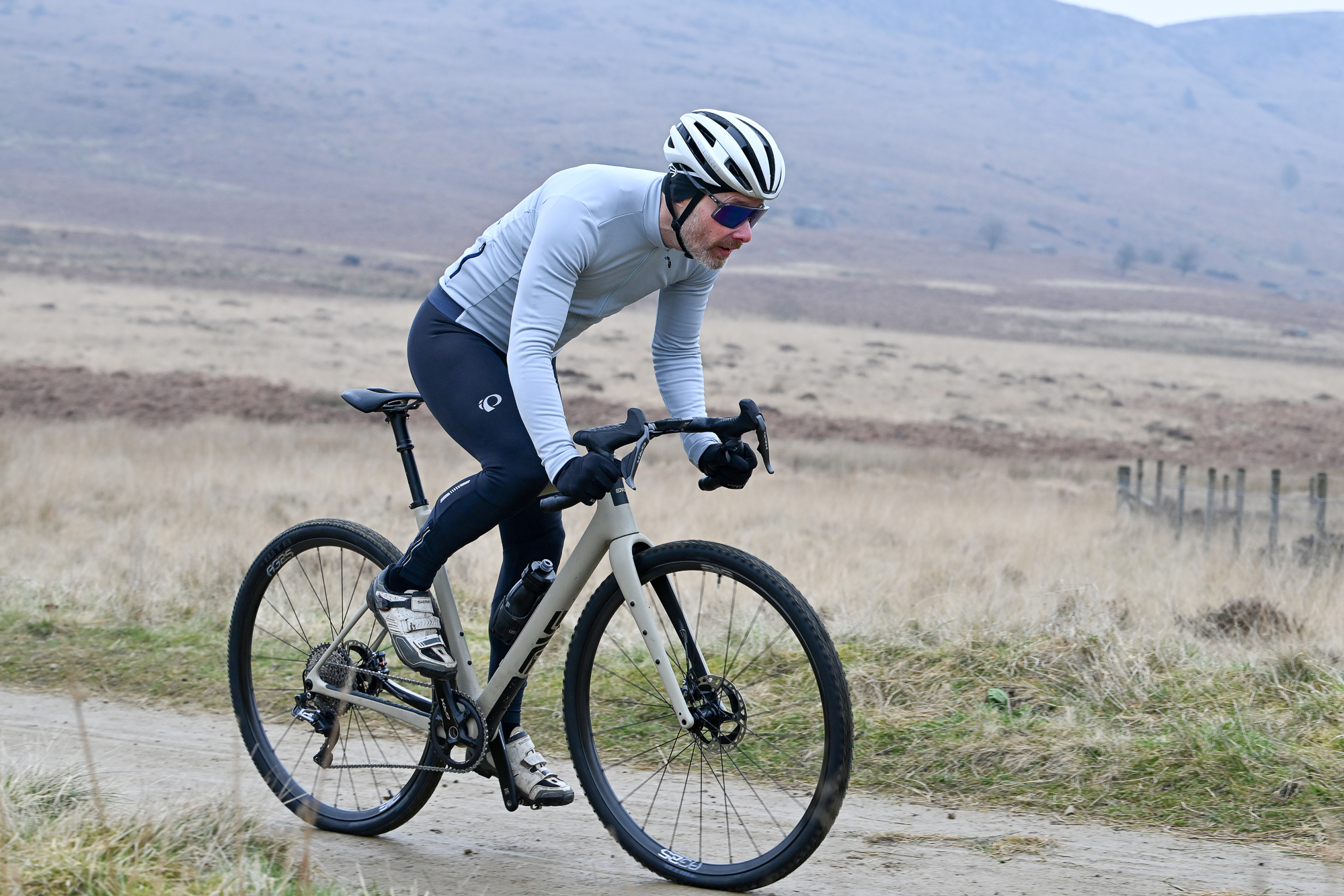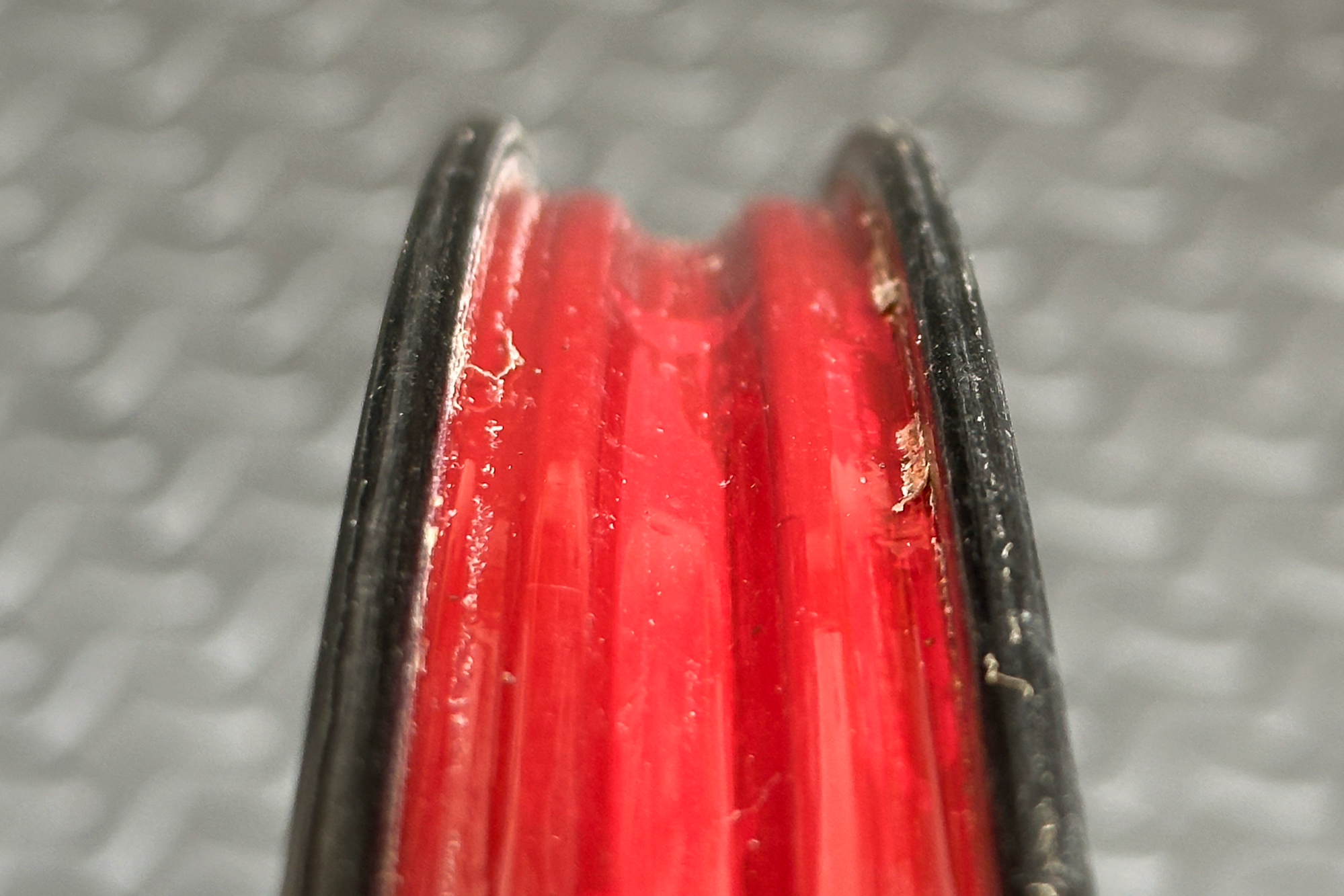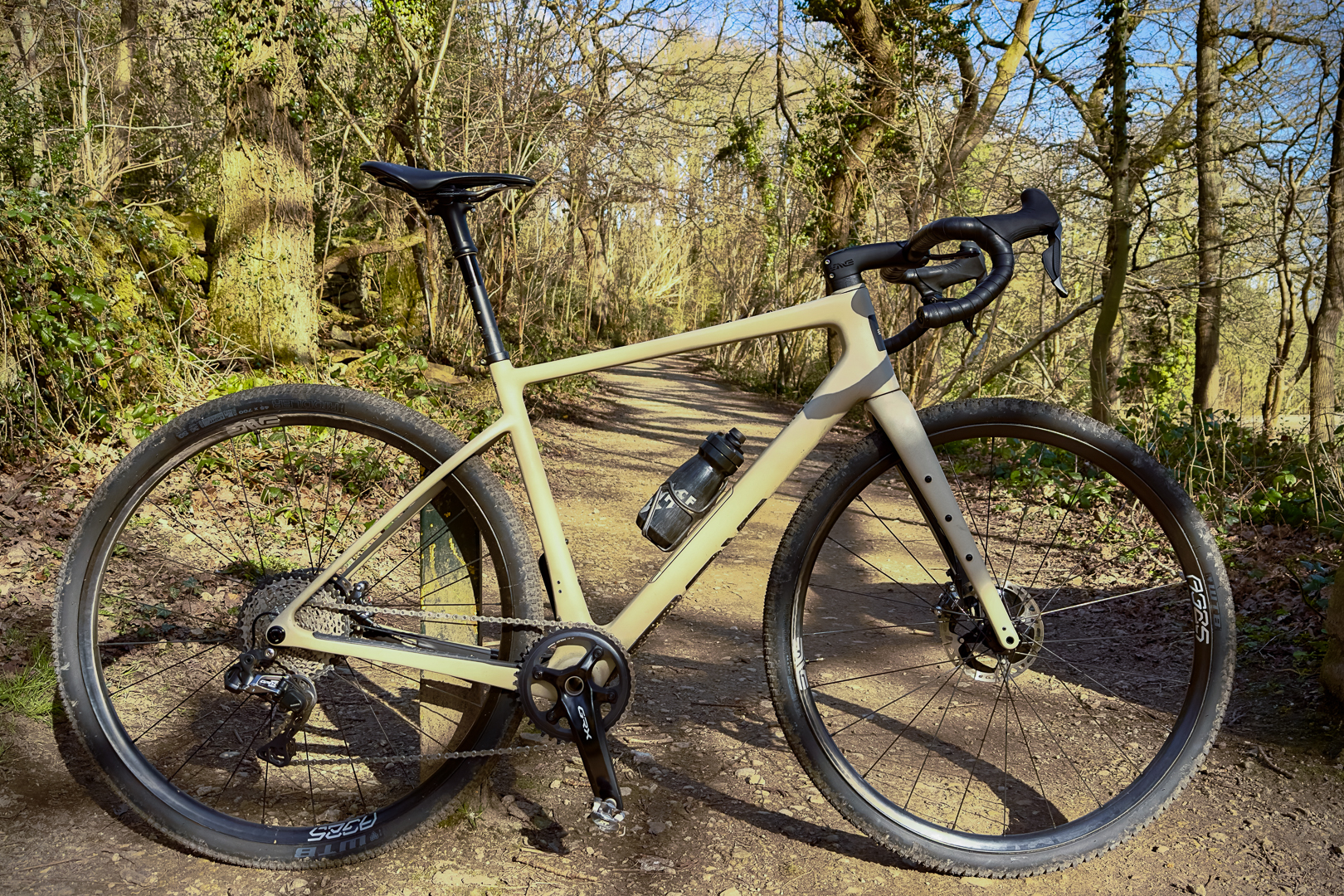Gravel wheels have a tough job. They have to combine the qualities of both road and mountain bike wheels, performing on smooth tarmac and rough trails, sometimes whilst laden down with bikepacking kit, and all without the luxury of suspension.
Oh, and could the best gravel wheels also be fast, light, and cheap while we’re at it?
Even the term ‘gravel’ now encompasses everything from pro-racing at speeds in excess of 35kph to continent-crushing, multi-week epics across every imaginable terrain, so gravel wheels must be very versatile too.
ENVE’s Foundation AG25 wheelset purports to offer just such versatility, with the brand claiming that the wheels are designed for ‘everything from bikepacking to racing’.
Construction
ENVE is known for its carbon expertise, so it’s no great surprise that there is a lot to talk about when it comes to the rim.
Dimension-wise, it is pretty shallow at just 21mm but has a 25mm inner width, so it has a very open U shape – the sides actually look slightly concave. The hookless bead is also rather wide and rounded, designed to prevent pinch punctures at low pressures, a feature ENVE calls Wide Hookless Bead flat protection. The rims are suitable for tyres from 36mm to 50mm, so they should cover pretty much all gravel requirements.
The wide but shallow carbon rims have concave sides
(Image credit: Andy Jones)
ENVE says that the carbon lay-up of the rim is ‘gravel-specific’, and should offer a combination of responsiveness and compliance with stability when cornering. Furthermore, the spoke and nipple holes are moulded rather than cut out, meaning that the strands of carbon fibre aren’t cut and weakened, whilst the external nipples aid serviceability.
The hubs are ENVE’s own Foundation Innerdrive, with 60t inboard steel ratchets giving a 6° engagement angle, although other ratchet options are available. With each wheel turning 24 bladed Sapim CX Sprints J-bend spokes.
ENVE claims a weight of 639g for the front and 768g for the rear wheel, making 1,407g for the wheelset. My scales reported 673g and 807g, which equals 1,480g, although this is with rim tape fitted, so probably not too far over the quoted weight.

ENVE’s rear hub has a 60t rachet system
(Image credit: Tim Russon)
The ride
With 45mm WTB Riddler and Raddler tyres mounted tubelessly, the AR25s certainly felt direct, responsive and quick, but compliance? Not so much, or at least, not as much as I was expecting. This surprised me, as typically, shallower rims, with commensurately longer spokes, are usually less stiff than wheels with deep rims, especially with J-bend spokes. The truth is, though, I was maybe expecting too much from the AG25s; wheel compliance and clever use of carbon layup in rims and frames is no match for the rocks and roots of the Peak District, so I shan’t be binning my suspension stem just yet.
ENVE might say that the AR25s are designed for both bikepacking and gravel racing, but I’d suggest that they are at the racier, smoother trail end of that spectrum. Of course, big volume tyres can add the necessary comfort, and it’s always nice not to feel that any effort is being wasted via flexy components, but be warned, if you typically ride long hours, the AG25s are stiffer than you might imagine.

The stiff wheels are better suited to smoother trails
(Image credit: Andy Jones)
The low thrum from the freehub had a high-quality sound to it, louder than my Fulcrum wheels but much quieter than my Scribes. As with most ratchet-freehub systems, engagement was rapid, which was most noticeable on techy climbs when the judicious application of power was sometimes needed to clear an obstacle. The other advantage of ratchet drive hubs is that they should last longer than freehubs with pawls, as there are far more points of engagement, so the load on each point is much less. Suffice it to say, in the test period, I had no issues.
Aesthetically, the wheels look a bit, erm, weedy. The 21mm depth is very shallow by modern standards, and although there are solid design reasons for using such a shallow rim, something a bit deeper would certainly look more purposeful. I was also a bit disappointed by the decals on the rims. The ‘AG25’ and ‘ENVE’ branding were simply external stickers, which seems a bit cheap on a high-end wheelset and will probably scratch up and look tatty quite quickly as stray rocks take their toll. I guess at least it makes them easy to pick off for a stealth look.

Wide rim beads help prevent pinch punctures
(Image credit: Tim Russon)
By the end of the test period, both wheels were less than a millimetre out of true, which is effectively irrelevant, despite my best, clumsy efforts on my local rocky routes.
Before the bike was returned, I needed to remove the tyres for photos and weighing. Refitting them was about what I would expect from gravel wheels and tyres, with just a final nudge from a tyre lever needed. The wide rims and noticeably wide beads didn’t cause any problems. Air retention throughout was very good in partnership with the WTB Riddler and Raddler tyres, although I was surprised that the tyres didn’t inflate to wider than their stated widths on the wide ENVE rims (but this is a tyre thing, not a wheel issue).
Value and conclusion
Wheel testing is always a bit difficult, and gravel wheels doubly so. Tyre choice, bike and terrain have such a big bearing on feel that it is hard to isolate each component. Furthermore, beyond ‘not breaking’, a lot of a wheel’s qualities will only really come to the fore after many months or even years of use and abuse. Things like durability, ease of truing, hub maintenance and availability of spares aren’t things that arise in 500-1,000km of testing.

At 21mm deep, the wheels lacked some visual punch
(Image credit: Tim Russon)
However, part of what you pay for with a wheelset like the AG25 is the knowledge that ENVE design, production, quality control and after-sales support should minimise the possibility of any issues during the wheels’ lifespan.
That they performed admirably during the test should be no surprise, at £1,800/ $1400, you’d expect nothing less. Objectively, there is very little to knock any marks off for other than the cheap decals, which seems a bit harsh. Subjectively, I much prefer the look of a slightly deeper rim, but then the weight would be closer to 1,600g than 1,500g. There are also many folk who would, understandably, baulk at the thought of spending a large chunk of cash on something that is only one errant rock or one wrong line choice away from being trashed. I would point those riders at ENVE’s Incidental Protection Programme, which does go some way towards mitigating those fears by offering a sliding scale of handy discounts on replacement parts.
